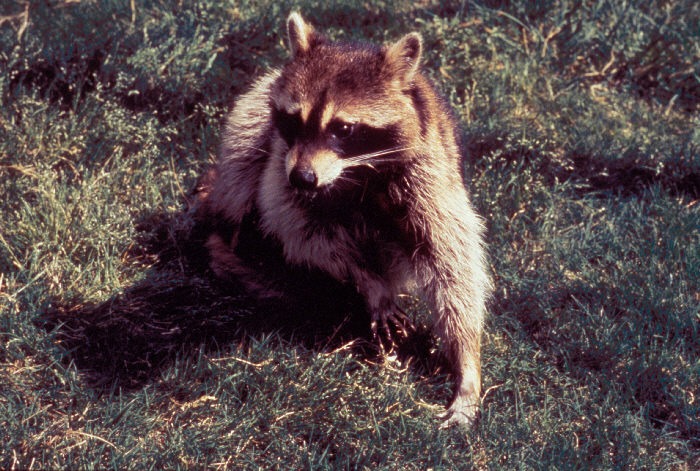
Alarge pet vaccine program, a stepped-up effort to trap more gray foxes and the remote possibility of raining vaccinations from the sky are all potential reactions to a rabies outbreak in the Cave Junction area.
The various options are outlined in a draft report now circulating among various state agencies to address the bat-rabies outbreak that has killed 10 animals — mostly gray foxes — over the past 13 months in the Cave Junction area of rural Josephine County.
Local veterinarians are offering low-cost rabies vaccination clinics, and more local people are bringing in their cats for vaccinations lately, says Dr. Joe Hoelzle, a Cave Junction veterinarian.
Vaccinations cost $20 for animals examined within a year, Hoelzle says. State rules require an examination within a year of vaccination, and that package costs $40, he says.
“About 80 percent (of the animals) I see are vaccinated,” Hoelzle says. “But there’s a huge population out there that doesn’t get veterinary attention, period.”
While dogs must be vaccinated for licensing, cats are not — yet they pose a greater risk of contracting rabies and passing it on to humans, says Colin Gillin, state wildlife veterinarian for the Oregon Department of Fish and Wildlife.
“Cats are more like likely to capture a bat flopping on your porch or get in a night fight with a rabid fox,” Gillin says.
Encouraging people in the area to get their pets, particularly dogs and cats, vaccinated and possibly paying area veterinarians to do so could be the best choice for keeping the disease from spreading to pets and possibly people, according to the draft.
Left untreated, rabies is 100 percent fatal.
“If dogs and cats were vaccinated, it would go a long way toward protecting public health,” said Colin Gillin, the state wildlife veterinarian for the Oregon Department of Fish and Wildlife and principal author of the draft.
The draft also outlines how increased fox trapping could help slow the disease spread if monitoring proves foxes are infecting animals. but that would require a change in trapping rules and could cause undue harm to other species, such as bobcats, according to the draft.
The plan also considers inoculating the area’s foxes and other wildlife by dropping vaccination-laced baits via helicopter, according to the draft. the baits, called Oral Rabies Vaccinations, have been effective in Texas along the Mexican border and in Massachusetts, where they have been used on public land.
However, the Cave Junction area where the rabid animals have been found is largely private, with nearly 1,000 individual tax lots in what would the target area. Each landowner would have to consent before any vaccinations were placed on their land, according to the draft.
“That’s probably way out there,” Gillin says. “You’d have to have the public and everybody on board. you can’t have big holes in your coverage area.”
The draft also spells out “triggers” for any of these different management options to kick in. A trigger could include a non-bat strain of rabies showing up or a human exposure to rabies.
“I think we all agree that, if we get a human exposure, that might trip it,” says Mark Vargas, the Rogue District wildlife biologist for the Oregon Department of Fish and Wildlife.
“We’ve never had anything like this with rabies before in Oregon,” Vargas says. “Obviously, human health is an issue.”
When completed, the plan represents a systematic approach to dealing with rabies in wildlife while biologists ferret out the distribution and range of the disease until it is either stamped out or recedes on its own.
“What you don’t want to do is take on an effort that was poorly planned, spend a lot of time and money without getting a result,” Gillin says. “It’s a great tool.”
Since the outbreak began, seven foxes, one domestic goat and one coyote have died of rabies in the Cave Junction area, along with a fox found dead near Merlin.
They all suffered from the same bat strain of rabies, and biologists have theorized that the disease hit the fox population by gray foxes eating dead or dying rabid bats in the area.
Since then, health officials already have launched a public education campaign asking people to vaccinate their horses and pets. the ODFW now also plans to test every dead fox found or trapped in Jackson and Josephine counties.
Despite the concern, Gillin says, the numbers of reported cases are the only ones in Oregon and represent rabies levels far lower than other states find regularly, Gillin says.
“Massachusetts probably gets a dozen cases in a week,” he says.
Biologists also do not know the extent of its presence in the area.
“If it’s still isolated in one area, can vaccinations control it and keep it there?” Vargas says. “That’s the big question.”
Rabies is a viral disease that attacks the nervous system of mammals and is fatal if untreated.
Rabies symptoms in wildlife include lethargy, walking in circles, loss of muscular coordination, convulsions, irritability or aggressiveness, disorientation, excessive drooling and lack of fear of humans.
Anyone who finds an animal acting peculiarly is urged to keep clear of it and telephone ODFW biologists at 541-826-8774.
Over the past two years, a strain of non-bat rabies, called terrestrial rabies, has been found in animals such as foxes and raccoons in Northern California, but not in Oregon.
Anyone who believes their pet could have interacted with the infected coyote found at Laurel Hills Cemetery in Cave Junction should contact their veterinarian or Josephine County Animal Control immediately at 541-474-5458.
Reach reporter Mark Freeman at 776-4470, or e-mail at .
Ads by Google